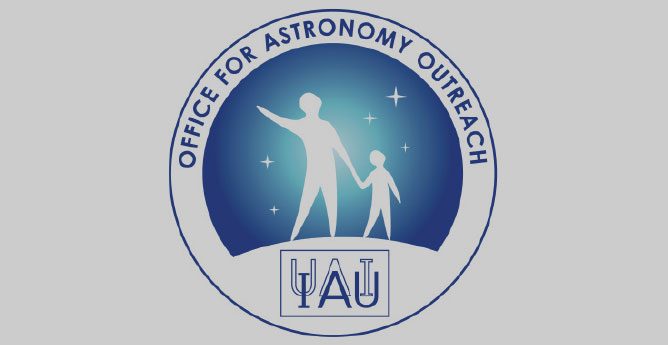- News
- Science
- Scientific Bodies
- Divisions
- Commissions
- Commission A1 Structure
- Commission A2 Structure
- Commission A3 Structure
- Commission A4 Structure
- Commission B1 Structure
- Commission B2 Structure
- Commission B3 Structure
- Commission B4 Structure
- Commission B5 Structure
- Commission B6 Structure
- Commission B7 Structure
- Commission C1 Structure
- Commission C2 Structure
- Commission C3 Structure
- Commission C4 Structure
- Commission C5 Structure
- Commission D1 Structure
- Commission E1 Structure
- Commission E2 Structure
- Commission E3 Structure
- Commission E4 Structure
- Commission F1 Structure
- Commission F2 Structure
- Commission F3 Structure
- Commission F4 Structure
- Commission G1 Structure
- Commission G2 Structure
- Commission G3 Structure
- Commission G4 Structure
- Commission G5 Structure
- Commission H1 Structure
- Commission H2 Structure
- Commission H3 Structure
- Commission H4 Structure
- Commission J1 Structure
- Commission J2 Structure
- Commission J3 Structure
- Commission X1 Structure
- Commission X2 Structure
- Past Commission Organising Committees
- Working Groups
- Centres
- Scientific Meetings
- Rules & Guidelines
- General Assemblies
- Meeting Proposals
- Future IAU Meetings
- General Assemblies
- EC Meetings
- Officers' Meetings
- Regional Meetings
- Symposia
- Focus Meetings
- Institutional Meetings
- IAU Offices Meetings
- IAU-Sponsored Meetings
- Letters of Intent submitted for 2024
- Letters of Intent submitted for 2023
- Letters of Intent submitted for 2022
- Letters of Intent submitted for 2021
- Letters of Intent submitted for 2020
- Past IAU Meetings
- Templates
- Other Meetings
- Grants & Prizes
- Scientific Bodies
- Publications
- IAU Publications
- IAU Strategic Plan
- Symposia
- WGSBN Bulletins
- Regional Meetings
- Information Bulletins/Catalyst
- E-Newsletters
- Focus Meetings
- Transactions A
- Transactions B
- Related Publications
- GA Newspapers
- CAPjournal
- IAU Books
- Brochures
- IAU Offices
- WG Reports
- Commission Reports
- Division Reports
- Past IAU Publications
- Rules, Guidelines and Instructions for Proceedings
- Publishers
- IAU Publications
- Administration
- About the IAU
- Statutes & Rules
- IAU Policies
- IAU Executive Bodies
- IAU Secretariat
- Resolutions
- Members Administration
- Administrative Dates & Deadlines
- International Organisations Relations
- Donate to the IAU
- Training in Astronomy
- Astronomy for Education
- Astronomy for Development
- Astronomy for the Public
- Office for Astronomy Outreach
- FAQ
- Themes
- Satellite Constellations
- Astronomy in Everyday Life
- How to Report a Discovery
- Careers in Astronomy
- Defining our Place in the Cosmos
- The Constellations
- Light Pollution
- Measuring the Universe
- Near Earth Objects
- How to Participate in Astronomy Research
- Naming of Astronomical Objects
- Naming of Exoplanets
- Buying Star Names
- Naming Stars
- Pluto and the Solar System
- IAU Member Statistics
- Our Moon: the Moon
- Meteors & Meteorites: The IAU Definitions of Meteor Terms
- UNESCO-IAU Portal to the Heritage of Astronomy
- Social Media
- Past Events
- Call for Online Resources
- Astronomy@Home Awards
- Contact
IAU Focus Meetings (GA)
FM 14: The Gravitational Wave Symphony of Structure Formation
Start date/time
August 12, 2015
End date/time
August 14, 2015
Place
Honolulu,
United States
Contact
Joseph Lazio
Joseph.Lazio@jpl.nasa.gov
Coordinating Division
Division D High Energy Phenomena and Fundamental Physics
Other Divisions:
B, J
Co-Chairs of SOC:
Sarah Burke-Spolaor (National Radio Astronomy Observatory)
Topics
- Gravitation
- Gravitational waves
- Galaxy mergers
- Fundamental physics
- Black hole physics
- Surveys
- Pulsars
- Instrumentation
Rationale
The topics of this Focus Meeting are at the intersection of galaxy evolution and fundamental physics---how studies of galaxy mergers can inform the detection of gravitational waves and how the detection and study of gravitational waves can constrain models for galaxy mergers.
The merger of galaxies is now recognized as an integral aspect of galaxy assembly and evolution, with large galaxies in the local Universe potentially having undergone multiple mergers. Most, if not all, large galaxies in the local Universe have supermassive black holes (SMBHs, > 10^7 M_sun) in their nuclei. A robust prediction of the galaxy merging process is that the merger product will contain two SMBHs, which, through dynamical friction, will sink to the center of the merger product. The two SMBHs form a bound binary when their separation is of order 10 pc. Further dynamical friction by stars in the central region, and possibly gas interactions, should cause the binary to harden, eventually to the point at which gravitational wave emission dominates its dynamics.
The broad overview of galaxy mergers and gravitational wave emission sketched above has received considerable support over the past decade. Simulations of merging galaxies have grown considerably in both complexity and reality, with circumbinary (SMBH) gas accretion disks and asymmetric stellar velocity distributions being incorporated. An important result of this recent work is that a potential bottleneck---often termed the "last parsec problem," in which the two SMBHs could not lose enough energy to approach closer than 1 pc and would never emit gravitational waves---now seems much less formidable. While specific hierarchical structure formation scenarios are even making quantitative predictions about the fraction of galaxies (~ 0.1--1%) of galaxies that might harbor dual SMBHs at redshifts z < 2, there are also substantial uncertainties in aspects such as the dynamical friction time scale.
Accretion onto the dual SMBHs should power a dual active galactic nucleus (AGN), and determining the rate of dual AGN formation (or the space density) is an important constraint on models. Observationally, there have been a variety of multi-wavelength approaches (X-ray, visible/IR, and radio) taken to search for and identify both dual AGN and, in some rare cases, there have even been proposed binary SMBHs found. While the spatial density of dual AGN at kiloparsec separations (~ 5 kpc) is becoming increasingly well constrained, there are only a few systems known at late (< 1 kpc separations) and very late (< 100 pc separations) stages of merger. These very late stages are of the greatest interest due to the increased interaction and certainty of their eventual coalescence at these late stages.
Excitingly, recent progress in pulsar timing arrays---constructed from a set of precisely timed millisecond radio pulsars---are beginning to encroach upon the gravitational wave strain amplitudes predicted from some of models for galaxy merger rates and cosmological structure formation. International consortia, using some of the world's largest radio telescopes, are obtaining sensitivities at nanohertz gravitational wave frequencies---frequencies at which in-spiraling SMBHs should be emitting. On the time scale of the General Assembly, all three of the international consortia should be approaching strain sensitivities such that the probability of a detection could exceed 90%. Much of the initial focus for pulsar timing arrays has been on the stochastic background, produced from the ensemble of in-spiraling SMBHs. There has also been considerable recent progress in understand the extent of the source population for pulsar timing arrays, and, by the time of the General Assembly, there should be robust pipelines searching for individual SMBH binaries.
The recent decision by ESA for a focus on the Gravitational Universe also provides a path toward the detection of millihertz gravitational waves, which should be emitted by in-spiraling SMBHs at an even later stage in their evolution. The absence of a detection by one or more of the international pulsar timing array consortia could potentially influence the design of future space-based missions.
Finally, studies of dual AGN systems may be able to identify common features in recent galaxy mergers that are easy markers for later stages of galaxy mergers. If so, observations and simulations of merging galaxies may inform attempts to "tune" gravitational wave telescopes, even enhancing the probability of the first gravitational wave discovery.

















